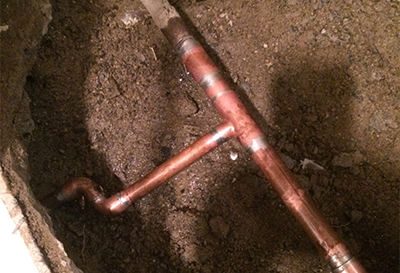This post which follows in relation to Hacks to detect leaks is definitely motivating. Give it a try and make your own findings.

Early discovery of leaking water lines can minimize a possible catastrophe. Some tiny water leaks might not be noticeable.
1. Check Out the Water Meter
Every home has a water meter. Checking it is a guaranteed way that helps you uncover leaks. For beginners, switch off all the water sources. Guarantee no one will certainly purge, make use of the tap, shower, run the washing equipment or dishwashing machine. From there, most likely to the meter and watch if it will alter. Since nobody is utilizing it, there need to be no movements. If it relocates, that shows a fast-moving leak. Likewise, if you find no changes, wait a hr or 2 and check back once again. This suggests you may have a slow leak that might also be underground.
2. Inspect Water Usage
If you spot abrupt adjustments, in spite of your usage being the same, it means that you have leakages in your plumbing system. An unexpected spike in your expense suggests a fast-moving leak.
A constant boost every month, even with the very same routines, shows you have a slow leakage that's likewise gradually rising. Call a plumber to extensively check your building, especially if you feel a warm area on your flooring with piping below.
3. Do a Food Coloring Examination
When it involves water intake, 30% originates from toilets. Test to see if they are running effectively. Decrease flecks of food shade in the storage tank and wait 10 minutes. There's a leak between the storage tank as well as bowl if the shade somehow infiltrates your bowl throughout that time without flushing.
4. Asses Exterior Lines
Don't fail to remember to inspect your exterior water lines also. Should water seep out of the connection, you have a loose rubber gasket. One tiny leak can squander bunches of water and spike your water bill.
5. Assess the scenario and evaluate
Homeowners ought to make it a practice to check under the sink counters and even inside cabinets for any bad odor or mold development. These 2 warnings suggest a leak so timely attention is required. Doing regular examinations, also bi-annually, can conserve you from a significant issue.
If you recognize your house is already old, keep a careful eye on your heating units, hose pipes, pipes and so on. Look for discolorations and also damaging as the majority of home appliances and pipelines have a life span. They will also naturally deteriorate due to tear and also use. Don't wait for it to escalate if you believe leaking water lines in your plumbing system. Call a professional plumber today so you do not end up with a dreadful mess in your home.
Early detection of dripping water lines can reduce a possible calamity. Some small water leaks may not be noticeable. Checking it is a guaranteed means that assists you uncover leaks. One tiny leakage can waste lots of water and spike your water bill.
If you believe dripping water lines in your plumbing system, do not wait for it to intensify.
WARNING SIGNS OF WATER LEAKAGE BEHIND THE WALL
PERSISTENT MUSTY ODORS
As water slowly drips from a leaky pipe inside the wall, flooring and sheetrock stay damp and develop an odor similar to wet cardboard. It generates a musty smell that can help you find hidden leaks.
MOLD IN UNUSUAL AREAS
Mold usually grows in wet areas like kitchens, baths and laundry rooms. If you spot the stuff on walls or baseboards in other rooms of the house, it’s a good indicator of undetected water leaks.
STAINS THAT GROW
When mold thrives around a leaky pipe, it sometimes takes hold on the inside surface of the affected wall. A growing stain on otherwise clean sheetrock is often your sign of a hidden plumbing problem.
PEELING OR BUBBLING WALLPAPER / PAINT
This clue is easy to miss in rooms that don’t get much use. When you see wallpaper separating along seams or paint bubbling or flaking off the wall, blame sheetrock that stays wet because of an undetected leak.
BUCKLED CEILINGS AND STAINED FLOORS
If ceilings or floors in bathrooms, kitchens or laundry areas develop structural problems, don’t rule out constant damp inside the walls. Wet sheetrock can affect adjacent framing, flooring and ceilings.
https://www.servicemasterbyzaba.com/blog/how-to-detect-water-leakage-in-walls/

We had been shown that editorial on Locating water leaks from someone on another domain. Enjoyed our posting? Please share it. Let other people find it. We truly appreciate reading our article about Hacks to detect leaks.